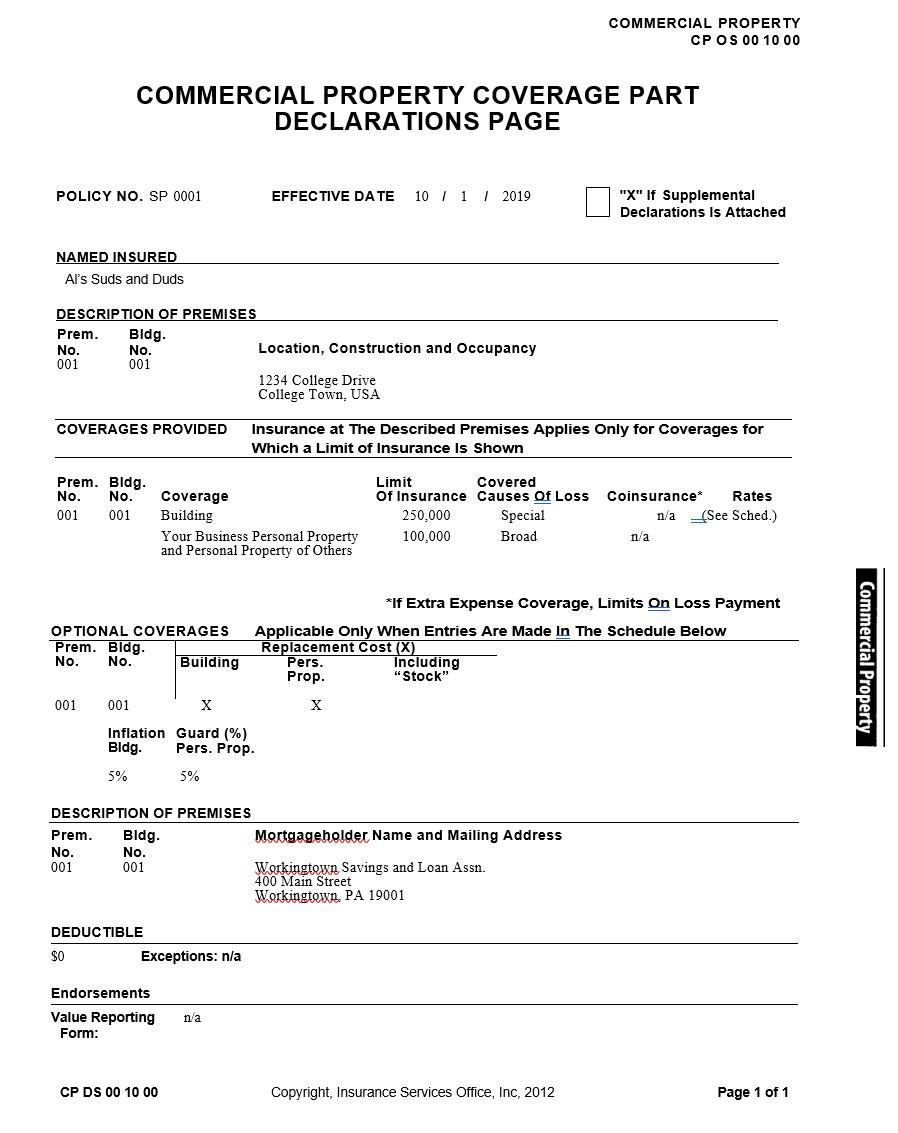

Often this is used to further describe the coverage, or to list any additional practice locations or additional insureds under the policy. In the bottom part of the COI there is an open text field that says Description of Operations. If there was a deductible on this policy, we’d see it here, as well. We can also see the policy limits in this section. If it’s an Occurrence policy, the retroactive date will be blank.
DECLARATION PAGE PROFESSIONAL
In the next section, we can see the type of insurance that you have in place with this carrier – in this example, we just have Professional Liability (which is another way to say malpractice insurance), so those fields are filled in with the type of policy you have in place, the policy number, the policy effective date and expiration date, and the retroactive date (if it’s a Claims-Made policy). Moving down the document, we can see the name and contact information for the agent or broker who wrote the policy for you.

In the top right corner, we see the date the certificate was created. Let’s take a look at a sample certificate together. On it, they’ll include all of the details of your new policy. Most insurance agents use a standard template for COIs, such as an Accord form.
DECLARATION PAGE VERIFICATION
It is generally issued by your malpractice insurance agent and can be used for credentialing or other coverage verification needs. Let’s start with the Certificate of Insurance.Ī Certificate of Insurance or “COI” is a 1-page document that is provided after your malpractice insurance application has been approved by a carrier, showing your proof of insurance. In this article we’re going to teach you all about these important forms so that you can easily understand your malpractice insurance policy details… AND supply your credentialing information to the necessary parties so that you can ensure smooth sailing in your medical practice.Ī Certificate of Insurance and a Policy Declaration Page are similar documents, and they serve the same general purpose – to sum up your malpractice coverage.Įach of these forms provide basic information on your malpractice policy such as the named insured, the insurance carrier that’s covering you, the type, dates, and amount of coverage. But what exactly are these documents? How do you read them? And why are they important? If you’re looking for proof of your medical malpractice insurance, there are 2 key documents that you’ll want to be familiar with in order to show that you’re covered – your Certificate of Insurance and your policy Declaration Page.


 0 kommentar(er)
0 kommentar(er)
